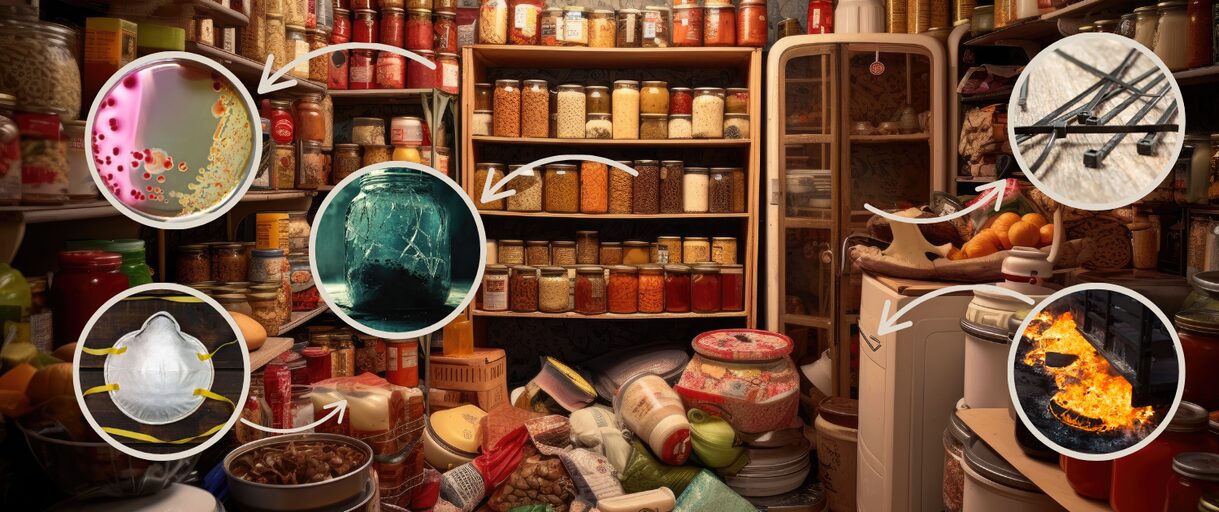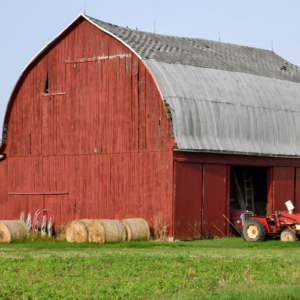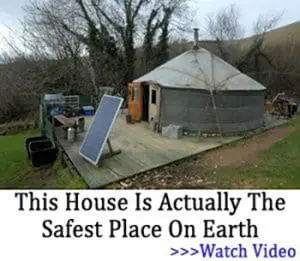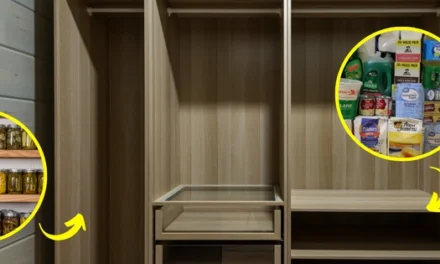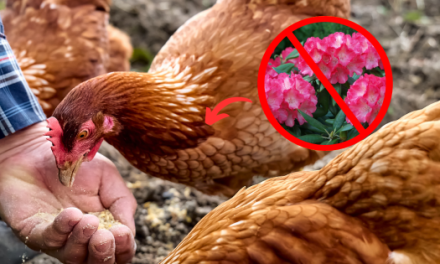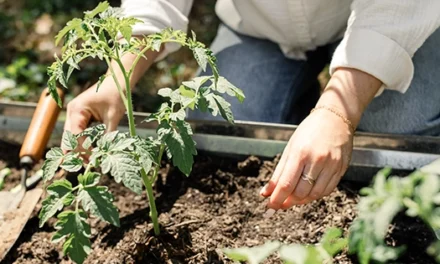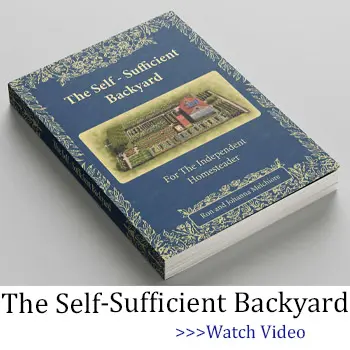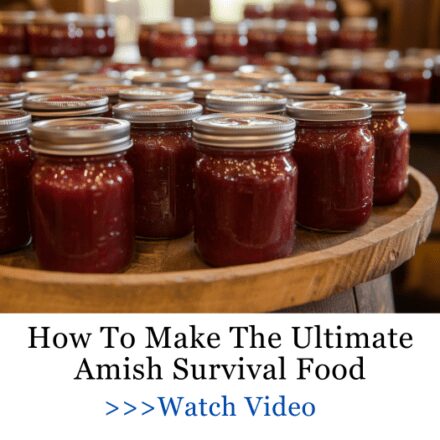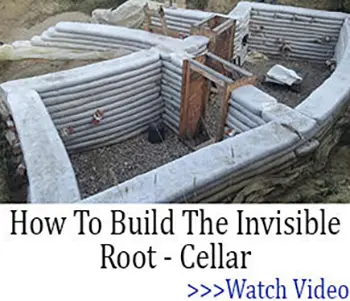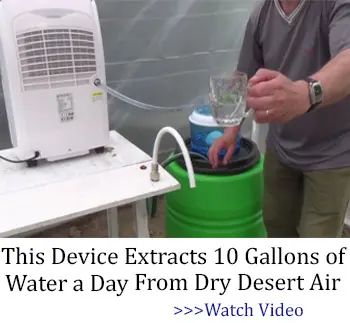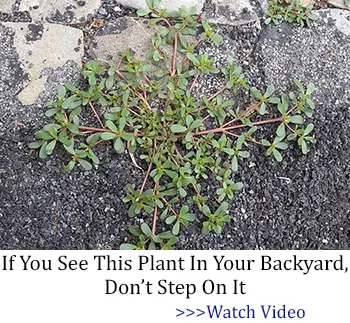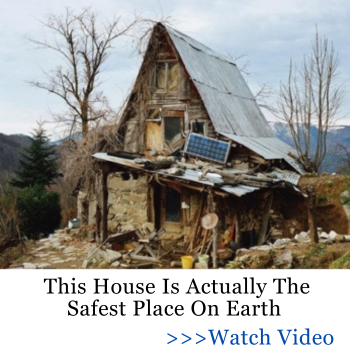Some of the deadliest items on your homestead aren’t from outside threats. They could already be inside your home.
And it’s not just the bleach or the bug spray. It’s the everyday things you thought were safe. Things you cook with, clean with, even store your food in. Things you’ve probably used today without a second thought. Harmless-looking tools, storage containers, or supplies you’ve used for years. But under the right conditions? They’re a disaster waiting to happen.
We’re talking fire hazards, explosion risks, accidental poisonings, tools that can snap without warning, and materials that can become deadly with age or heat.
These aren’t just “old wives’ tales.” These are real threats people have learned about the hard way, often after it’s too late.
It doesn’t matter how careful you are. If these things are still in your home, you’re taking a risk every single day.
Before something goes wrong, take a good look at what needs to go. You might be surprised at what’s putting your homestead and safety in danger.
Toxic Threats Hiding in Plain Sight
Your homestead’s kitchen and storage areas likely hide more chemical time bombs than you realize.
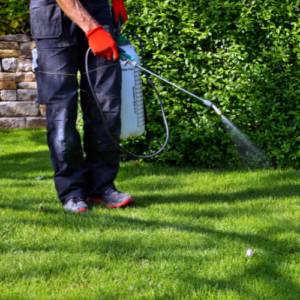
Take those store-bought “multi-surface” cleaners. The ones with bright labels and lemon scent? Most of them contain quats and synthetic fragrances, known to trigger respiratory issues, especially when used around animals or kids. One spilled bottle near the brooder left my chicks gasping for air.
It’s more than just a surface cleaner – it’s a corrosive hazard. If you’re not careful, even a tiny spill can burn through skin and damage delicate surfaces. Worse yet, mix it with bleach by accident, and you’re looking at a highly dangerous, toxic gas that can render you unconscious in seconds.
And those pest control sprays the hardware store shelves are full of? I used to rely on them until I learned they coat everything with residue that’s toxic to bees and chickens. Even a small amount tracked into the coop can do real damage.
That store-bought drain cleaner? It might look harmless, but it’s highly reactive. If you mix it with just a little water or a few leftover chemicals in the pipes, it can explode. And if you’ve ever used it to clear a stubborn clog, you’ve probably breathed in toxic fumes that can burn your lungs – permanently.
What about those seemingly safe air fresheners that hang in your bathroom or plug into the walls? You might think they just smell nice, but those chemicals? They’re explosive when exposed to heat, and if they catch fire, they can ignite your entire room in seconds. And they leave behind dangerous residue that clings to everything – your skin, your clothes, and your lungs.
Don’t overlook your canning supplies, either. I’m talking about that mason jar with a barely-visible crack. It’s a botulism risk waiting to explode. I lost an entire batch of pickled green beans last summer because I ignored a hairline fracture. And even worse: rusted pressure canner gauges.
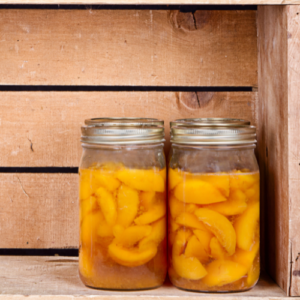
And those plastic containers people usually store their food in? They’re not just leaching BPA and chemicals into your meals. Over time, the plastic can break down, causing them to crack or shatter, potentially causing severe cuts or allowing harmful bacteria to thrive inside.
These aren’t just accidents. They’re silent threats hiding in plain sight. And even the most experienced homesteaders could easily fall into one of these traps without realizing it. Most of these fatal canning mistakes are actually things people do with the best intentions – reusing old lids, skipping pressure canning for low-acid foods, trusting that ”it looks fine, so it must be safe”.
But botulism doesn’t give you a warning sign. You won’t smell it. You won’t see it. And by the time symptoms show up, the damage is already done.
All it takes is one overlooked step…and the food you carefully preserved for you and your family could become the very thing that puts you all in danger.
Fire Hazards Unique to Homesteads
Fire is a silent killer on the homestead. The scariest part? It doesn’t always come from where you expect.
The wood stove that keeps you warm? If the chimney hasn’t been cleaned, creosote buildup is a disaster waiting to happen. One spark from the stove and a roaring fire can engulf your home, threatening everything you’ve built.
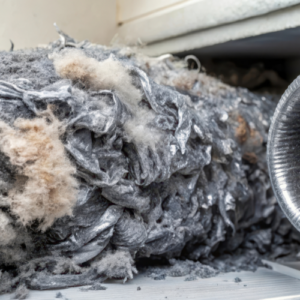
Creosote build-up is a silent arsonist. One frigid January night, a chimney fire torched my neighbors’ roof in under 10 minutes. Here’s what’s even crazier: the “fast-burn” hacks, like tossing cardboard into the stove to “clean” the flue, actually baked creosote into a flammable glaze. Burn seasoned hardwood only—no shortcuts here.
Hay bales stacked in the barn seem harmless, but without proper ventilation, they’re a ticking time bomb. In warm weather, tightly packed hay can spontaneously combust, quickly turning your barn into a blazing inferno.
Aged propane tanks are also dangerous to have around. About a few years back, I helped a friend haul a “vintage” 1970s tank from a flea market last fall, only to discover its valve seal had crumbled to dust. If it’s exposed to heat or stored incorrectly, it becomes a potential explosion. A single spark or misplaced heat source can cause it to burst, leaving everything around it in flames.
A pile of dry grass, leaves, or straw isn’t just yard waste, it’s a fire hazard. Left unattended, it can catch fire from even the smallest spark, and the wind can carry those flames to your home or barn before you can even react.
Old extension cords are an easy way to power tools, but they’re also a serious risk. Frayed wires or overloaded outlets can turn any tool into a fire hazard. One faulty connection and everything in the vicinity could be up in smoke.
Burning brush or debris might seem like a quick fix, but leaving it unattended is a recipe for disaster. What begins as a small, controlled burn can quickly spiral out of control, wiping out everything in its path.
Tools & Equipment Past Their Prime
Duct tape isn’t a solution. It’s a temporary fix that can cost you big down the road.
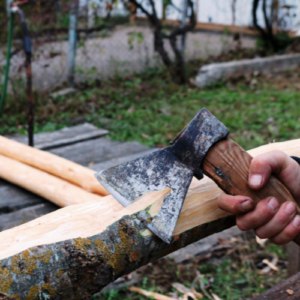
As homesteaders, we understand the importance of stretching a dollar, but worn-out tools are often more expensive than just replacing them outright.
Take that old axe hanging in the shed, for example. After 500+ swings, metal fatigue can set in, and that loose axe head isn’t just inefficient. It’s deadly. The next swing could send it flying like a bullet, leaving you bleeding out in the woods, or worse. A simple wobble in the axe’s eye – the hole where the handle fits – can turn into a high-velocity projectile aimed straight at you or someone nearby.
But here’s the thing: in a pinch, you can craft life-saving tools yourself using nothing more than what the woods around you provide. There are ways to make serviceable mallets, wedges, even functional cutting tools with the right know-how and a few raw materials.
Until you can get a proper replacement, these improvised tools can mean the difference between continuing the job and ending up stranded, injured, or worse. And once you learn how to make them, you’ll never look at a fallen branch or chunk of stone the same way again.
Animal care gear isn’t as innocent as it looks either. Last spring, a friend’s brittle livestock needle shattered during a routine vaccination, and the glass shards lodged deep in the sheep’s muscle. It was a nightmare—two hours of frantic cleaning, sterilizing, and digging out glass. If that needle had shattered differently, it could’ve punctured an artery or worse. Imagine it happening during a high-stress procedure.
While we’re poking around in the back of the shed, here’s one most people overlook until it’s too late: expired black powder. Maybe it’s a leftover from muzzleloader season, or maybe it’s stashed for the “just in case” pile, but that old tin can turn into a deathtrap without so much as a warning. Time, air and moisture don’t just make it useless – they make it unstable. One bump, one spark, even a slight change in temperature can set it off. If it’s clumping, hissing or giving off a strange odor, you’re not holding a tool—you’re holding a potential explosion. And when black powder goes, it doesn’t just fizzle. It tears through walls, flesh, and anything nearby without mercy.
If you’ve got an old stash like that, don’t wait for a tragedy. Dispose of it properly. But here’s the good news: making black powder at home is entirely possible when you know what you’re doing. With just three ingredients you can create a batch that’s far more stable, reliable and effective than any mystery mix sitting in a rusted can.
Learning to make it yourself isn’t just about self-reliance. It’s about safety. Because when you understand exactly what goes into it – and how to store it right – you’re not just saving money. You’re keeping your homestead from potentially becoming a crime scene.
And those frayed electric fence wires you’ve been ignoring? They’re not just inefficient – they’re a deadly risk waiting to spark. A weakened fence can send unpredictable surges of electricity, and a startled cow can tear right through it, trampling crops or worse. That one instance could ruin your entire season, leaving you without food and facing financial ruin. Replacing 18-gauge wires every 3-5 years isn’t optional anymore.
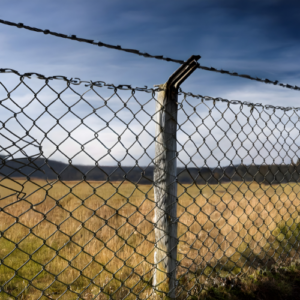
The “it’ll do” mentality doesn’t just put your livestock in danger. It puts you at risk too. I’ve seen it all: a tool snapping at the wrong moment, sending someone to the ER; a fence shorting out and setting fire to a field; a needle breaking off inside an animal. All because someone thought they could get “one more use” out of a piece of equipment.
Set a biannual gear audit. Don’t wait until something goes wrong. Mark your calendar: first Sunday in May and November.
Pair with a local vet or farrier to inspect animal equipment. A stitch in time saves nine, and on a homestead, those nine stitches might be yours.
Worn tools aren’t your only liability. Those weathered beams and rusted nails in your barn? They could collapse under the weight of complacency, leaving you trapped under debris or worse, costing you your home.
Ignoring structural hazards is a gamble you won’t always win. Let’s break down the structural hazards you’re walking past daily.
Structural Hazards in Barns and Outbuildings
Your barn’s weathered charm could mask a death trap.
Dry rot thrives in damp wood, weakening beams until they crumble like cornbread.
That loft ladder your granddad built in ’75? Its rungs might snap under your boots. Inspect wooden structures annually for splintering, and replace any board with cracks wider than a dime.
Then there’s storage habits: stacking feed sacks against walls blocks ventilation, inviting mold that sickens livestock. A farmer in Kentucky lost six chickens to respiratory failure after storing grain in a sealed, unventilated corner. Keep shelves 6 inches from walls and use pallets to avoid moisture traps.
And let’s gut the myth of DIY repairs. Baling wire and prayers won’t fix a sagging roof. Use galvanized screws, not nails, for permanent fixes. And never trust a “temporary” repair longer than a season.
The Silent Killers
That dusty can of old paint thinner sitting in your shed? It’s a dormant explosive. Over time, vapors build up pressure, and one bump or spark is all it takes to turn your workshop into a fireball.
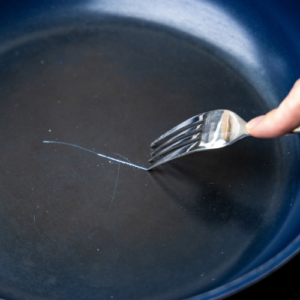
Now, let’s talk about that non-stick cookware we all bought at least once on sale. Once it scratches, it starts shedding PTFE and PFOA, synthetic compounds linked to everything from thyroid issues to immune suppression. I switched to cast iron and homemade seasoning oil. It takes five minutes and won’t poison your breakfast.
Conventional garden slug pellets. These often contain metaldehyde, which is lethal to pets, children, and wildlife even in small amounts. A child in my area ended up hospitalized after handling them. Try crushed eggshells, copper tape or DIY beer traps instead.
Aerosol rust removers and metal polishes? Many contain hydrofluoric acid or ammonium bifluoride. These are fast-acting toxins that can enter through the skin and attack bones. For homestead tools, use a vinegar soak or a paste of baking soda and lemon juice.
Conventional mothballs are made with naphthalene or paradichlorobenzene, both linked to nerve and liver damage. Their fumes concentrate in small spaces like closets or root cellars. Choose homemade lavender and cedar sachets as natural deterrents.
PVC-based plastic hoses: These can leach phthalates and lead into your drinking water and garden soil, especially when heated by the sun. Replace with food-grade silicone or rubber hoses, or collect rainwater in food-safe barrels.
You can go weeks without food, but only three days without water. And yet, I’ve seen more dangerous mistakes with water storage than anything else on the homestead.
One family I know stored emergency water in repurposed milk jugs. Within weeks, bacteria had colonized the plastic, turning the “clean” water into a breeding ground. One sip sent their youngest to the ER with violent vomiting. Not all plastics are food-safe long term.
And don’t trust every “blue barrel” you see at a farm auction. If it once held pesticides or industrial chemicals, no amount of rinsing will ever make it safe. Storing water in direct sunlight? That’s practically inviting algae to take over. And stacking containers directly on concrete? That leaches lime and contaminants up into your supply.
Even the wrong lid can ruin everything. Screw tops without a seal can let bacteria in and turn a survival stockpile into a toxic brew. These are just a few of the deadly water storage mistakes people tend to make without even realizing they are putting their lives at stake.
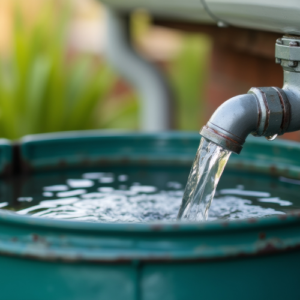
What’s worse is how common they are. In a crisis, there’s no margin for error. You don’t get a second chance to purify a tainted barrel. You don’t get a do-over if your family gets sick from water you thought was safe.
Joel Lambert broke it down step by step: how to sanitize containers properly, how to test for contaminants, and which materials slowly leach toxins over time. Honestly, it was sobering. I’d been making a few of those mistakes myself.
If you’re serious about preparedness, clean water has to be non-negotiable. Because when the taps stop flowing, the last thing you want is to discover your backup supply is slowly poisoning you.
And what about that generator you’re running “safely” near an open window? CO can backdraft into your home faster than you think.
Install detectors and test them monthly—I replace mine every 5 years religiously.
Lead hides where you least expect it. My “charming” 1940s enamelware coffee pot? Lab tests showed lead levels at 800 ppm—40 times the FDA limit.
Pre-1970s cabin pipes often leach lead into drinking water; a client’s vintage cabin tested at 15 ppb (the EPA’s redline is 5).
Building a Safer, Stronger Homestead
Safety on the homestead starts with mindset.
Replace gear when the risk outweighs the savings. That $20 axe head isn’t worth a $5,000 ER visit—and a fresh livestock needle costs far less than a vet call for an infection.
But don’t go it alone.
Join a local homesteading co-op or an online group to trade safety tips and hard-earned lessons. Knowledge spreads faster than fire—and in remote areas, that’s your best insurance policy.
Ditch the hazards. Keep the independence.
Best Non Toxic Bakeware: A Comprehensive Guide for Self-Sufficient Living
Survival Items You Need but Never Heard About (Video)
Do NOT Store Your Dry Goods Like This
8 Off-Grid Projects I Regret Building on My Property
Household Items People Repurposed During the Great Depression

